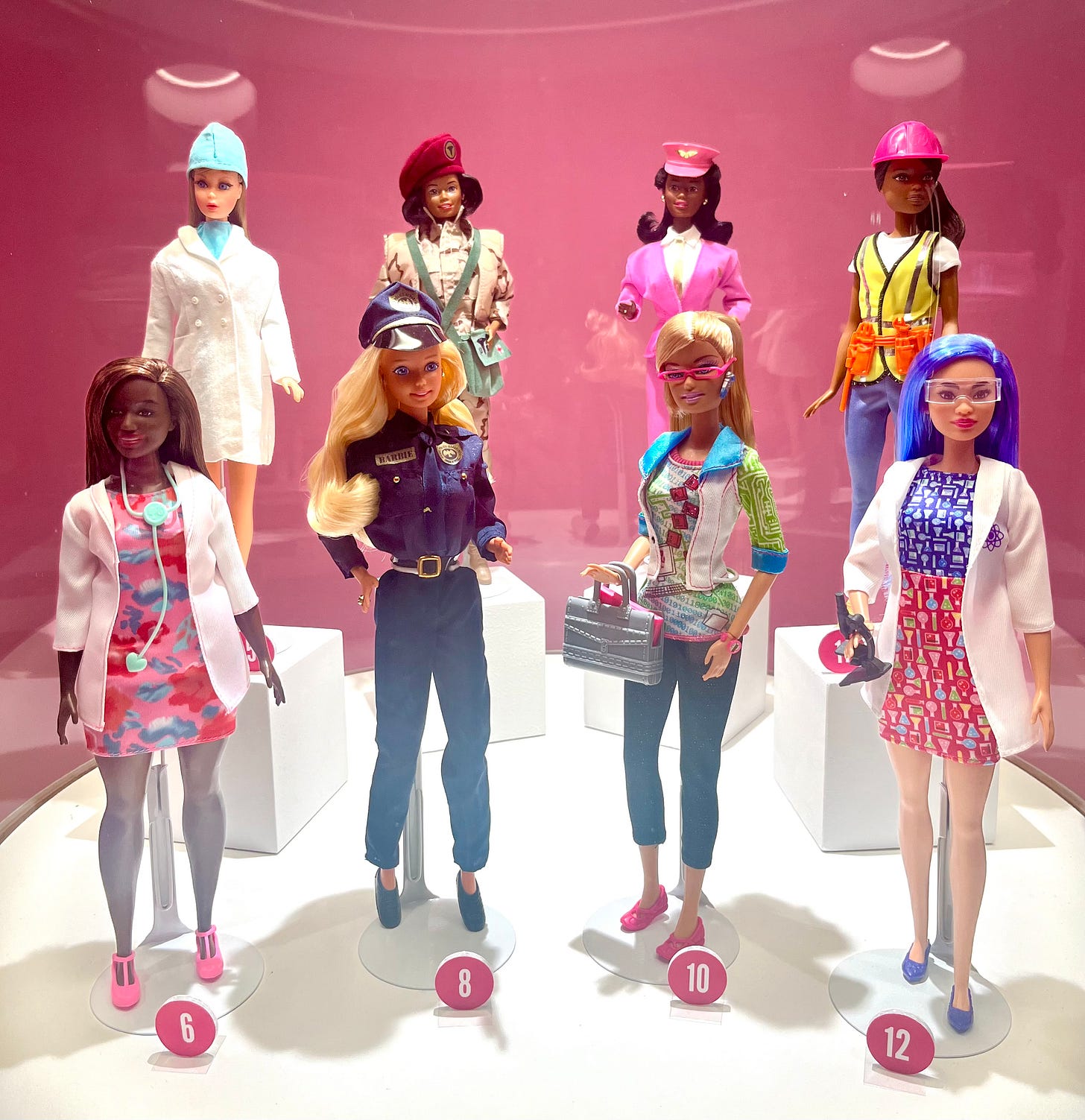I’ve been away this week but fear not, I saw some things and I have Views.
This week
Had it not been for Greta Gerwig’s BILLION DOLLAR movie that came out last year, I might not have bothered with the new Barbie exhibition, which opened at the Design Museum last week. I would have missed out. This in-depth look at what is, however you slice it, a design icon, is a fascinating walk through the changing public face of conventional beauty and womanhood.
It’s also really fun, and really interesting. Born in 1959 from the mind of Ruth Handler at Mattel (inevitably, she had to fight male executives to get Barbie produced, because they simply couldn’t see the point), Barbie was always a fashion doll, to be dressed in different outfits, which you could buy separately (sometimes at a higher cost than the doll, indicating the intricate engineering required to make them fit this tiny, mad body so perfectly) and that reflected different lives and possibilities.
As the first adult female doll of the era, in glittering contrast to the baby dolls foisted on young girls (of which I never had one; my mother thought they were creepy as all hell and I was inclined to agree), she was designed specifically to enable them to engage in imaginative role play that didn't involve motherhood.
Ken was her ‘boyfriend’ - that’s all, he never had a job. Unlike Barbie, whose extensive portfolio career has included It Girl, astronaut, rock star, rapper, football ref, cinematographer, paramedic, pasta chef, chief sustainability officer, political fundraiser, police officer, member of the military and builder, among other things - so she never had to be a wife, unless you wanted her to.
Skipper was her little sister, allowing for caring responsibility in play without the complication of her actually having a kid.
She was technologically advanced, too, in her articulation and, at one point, her brief ability to speak (which in the end of course nobody really wants - too limiting on the imagination) but what’s most interesting is how she changed over time.
A timeline of Barbies takes you from the first Jessica Rabbit-like creature through multiple evolutionary stages, sometimes using the same face but with transformationally different ‘makeup’, through changing skin colours and hip widths, as the demand for greater diversity became louder (yes, they are still all conventionally hot. They’re a product, you have to want to buy them).
I had Barbies. It’s hard to overstate the rush of nostalgic pleasure experienced at the sight of so many tiny plastic shoes, bags, nurse’s hats, sunglasses, stethoscopes, wrenches, guitars and, erm, environmental protest placards.
But it was the fashion and the possibilities that it afforded that made Barbie into an icon. She could be anything and do whatever you wanted, in clothes inspired and often created by the hottest designers of the moment, and little girls adored her (mostly, though I suspect that in many households some tender lad’s sister’s Barbie surreptitiously assisted with an awakening of some kind). Maybe we still do a bit. That’s on until February 23.
Mnemonic, the 25 year old Complicité show now revived and gently updated for the National Theatre, was a massive disappointment to me. A meditation on memory, connectedness, our need for stories and how much we can ever really know, it weaves together the narratives of a woman who goes looking for her absent father after her mother’s death, and a 5,000 year old man, a real person, found trapped in the ice in the Tyrolean Alps in 1991.
After a slightly too long preamble delivered with verve by actor Khalid Abdalla (he’s great, though underused for long stretches) on the subject of memory and the universe, it then took me a good 15-20 minutes to care about anything that was happening on stage, until eventually I got interested in Ötzi the Iceman.
There is a very well done, very amusing scene towards the end, of international academics mildly bickering over why he might have been there, and the scenes of the fiendishly difficult attempts to extract him from his frozen grave are imaginatively staged.
Keep reading with a 7-day free trial
Subscribe to The London Culture Edit to keep reading this post and get 7 days of free access to the full post archives.






